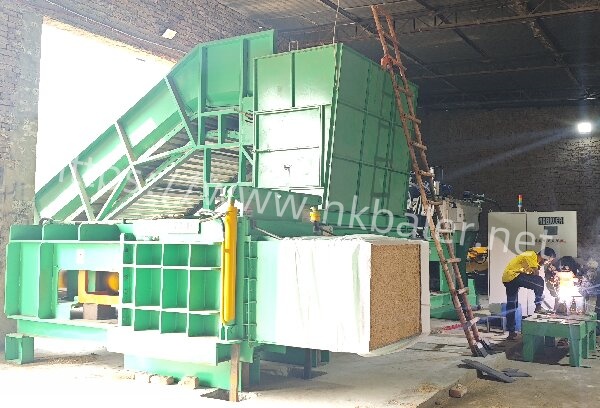Product Description
NKB280 Straw Bagging Press Machine is a kind of equipment used to compress and pack agricultural waste such as straw, which is widely used in agricultural production, animal husbandry and biomass energy fields. The device uses a hydraulic transmission system to compress loose straw into tight, regular bundles that are easy to store and transport.
The following are some notable features of straw balers:Automatic control: Fully automatic, greatly saving labor.Adaptable: Bale length and density can be adjusted according to crop conditions, transportation and storage requirements.this Straw Bagging Press Machine is Low energy consumption: low power consumption, small footprint, high density and other characteristics make the straw baler more energy saving and environmental protection during operation.

|
Model
|
NKB280
|
|
Bale size(MM)(L*W*H)
|
1500*1200*900mm
|
|
Bale Weight(KG)
|
Dry 450-500KG
|
|
Feeding opening size (L*W)mm
|
2000*1200
|
|
Capability(T/H)
|
12-15T/H
|
|
Output capacity
|
30 bale/H
|
|
Strapping
|
Plastic bags/woven bags
|
|
Power (KW)
|
75KW*2/200HP
|
|
Voltage
|
200-480V/50HZ
|
|
Feeding way
|
Steel conveyor
|
|
Machine size(MM)(L*W*H)
|
9800*4800*3580mm
|
|
Machine weight(T)
|
32T
|
About Us
Nick machinery specialized in hydraulic machinery,Hydraulic Baling Machine for Waste Material, baler application, waste paper Balers ,baling machine, baling press, recycling baler, Baling Presses & Balers, hydraulic baling press, baler, balers and also shredder ,crusher , Double Shaft Shredder,Tyre Crusher,Shredder,Copper Wire recyclingMachine, Heavy Crusher ect ,packaging machinery equipmentdevelopment, production, sales, service as one of the environmental protection products company, Our products are mainlyabsorbing Germany ,European and Americantechnology, products has already exported more than 60 countriesand regions at home and abroad. The company adhering to the "To change made- in-China in the international market influence" of the target as the prerequisite, to ensure that the "Products service maximization,Customer benefit maximization" asthe enterprise production policy, mainly on waste paper, waste plastics, scrap metal, fiber, agricultural straw recycling industry,it‘s for enterprise to providing convenient,fast, safe and economic solutions,now we have after-sales service center like India, Dubai, Australia, the United States and so on and well received by users.
Video
-
https://youtu.be/zzD6SA_pwlA
FAQ
Q1: What materials are Automatic Tie Balers usually used for?
Automatic baling machines are usually used for baling straw, hay, straw, pasture and other similar agricultural materials. They can also be used to recycle organic waste such as sawdust or garden waste.
Q2: How does the automatic strapping machine ensure the density of the bundling materials?
Automatic strapping machines ensure the density of the material through an internal compaction system, which may include hydraulic pistons, belt conveyors or rollers, which compress the material to a set density before bundling.
Q3: What kind of binding material does the automatic strapping machine use when bundling materials?
Automatic strapping machines can use plastic ropes or metal wires as binding materials. Which type to use depends on the end use and required durability. For example, metal wire is more durable for outdoor storage, while plastic rope is easier to handle and recycle.
Q4: What should I do if the automatic strapping machine fails?
If the automatic strapping machine fails, you should first stop the machine and disconnect the power supply, and then check according to the troubleshooting guide in the user manual. If the problem cannot be resolved on your own, you should contact a professional technician or the manufacturer's customer service department for further assistance and support.
Q5: How to maintain the automatic strapping machine to extend its service life?
Regular maintenance is the key to extending the life of your automatic strapping machine. This includes cleaning the machine, lubricating moving parts, inspecting and replacing worn parts, and following the manufacturer's service intervals and maintenance guidelines. In addition, operating the equipment correctly and avoiding overloading are also important maintenance measures.
Related Product
Message Us


